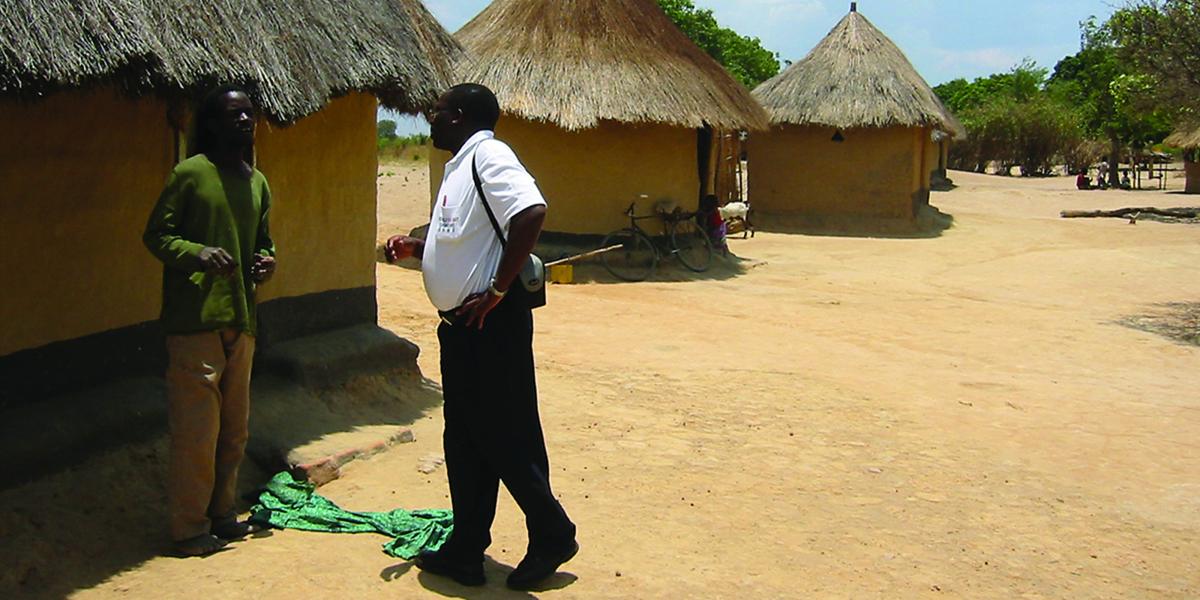A Strategic Approach to Controlling TB
In marking World TB Day earlier this year, international health experts announced that tuberculosis rates are falling or stable in most parts of the world. The notable exception is Africa, where the AIDS epidemic in the past decade has caused TB to spiral out of control.
In sub-Saharan Africa, two-thirds of TB patients also have HIV, and in South Africa alone there are 2 million adults co-infected with the diseases.
"People with HIV are very susceptible to TB, and right now both diseases are out of control in Africa," says Richard Chaisson, MD, an infectious disease specialist and professor of Medicine, Epidemiology and International Health. He has spent the past 20 years at the forefront of the HIV/TB convergence, working toward more collaborative treatment and prevention approaches. "We really can do something about TB because we have both the means to cure it and the means to prevent it, but making that happen is difficult," he says. Chaisson heads the Consortium to Respond Effectively to the AIDS-TB Epidemic (CREATE), which received a $44.7 million grant in 2004 from the Bill and Melinda Gates Foundation to evaluate new strategies to control TB in communities with high HIV infection rates. Led by the Johns Hopkins University Center for Tuberculosis Research, which Chaisson founded and currently directs, the consortium is conducting three large-scale community studies in Africa and South America. Over the next six years, the CREATE studies are expected to yield information that will translate into global and national public health policies.
The conventional approach to TB control, known as DOTS—directly observed treatment short course—uses health workers to watch patients take their drugs over a 6-month period to ensure compliance. But the strategy appears to be insufficient to control TB in areas with high HIV prevalence. New approaches include providing preventive treatment before people get sick with TB, and finding active TB cases early, before patients seek care.
"People with HIV are very susceptible to TB, and right now both diseases are out of control in Africa." —Richard Chaisson
"We have drugs to prevent TB," Chaisson says, "but we don't know the best strategies for using them."
Two of CREATE's studies look at much broader use of TB preventive therapy, and in an NIH-funded study in Soweto with dual-infected patients, Chaisson is exploring the effectiveness of a new, more powerful TB drug that is taken for just three months.
Beyond determining the most effective TB control strategies, one of the biggest obstacles to progress is the failure of African health systems to address HIV and TB co-infection as one public health issue.
"The two leading killers in Africa are still not confronted in an integrated way," Chaisson says, noting that TB clinics don't routinely test for HIV. "There are separate TB and AIDS programs, and it's clear they need to come together because they're really dealing with the same people."
A study which addressed both diseases, and in which Chaisson was involved, took place from 1999 to 2001 in a South African gold mine with a large population of HIV-infected workers with latent TB. Researchers opened a clinic for HIV-positive miners in an effort to reduce related infections, including progression to active TB. An analysis showed a 38 percent reduction in the overall incidence of TB among the miners. The results led to the current CREATE trial, which is looking at the effects of mass preventive therapy on entire communities of South African gold miners.
The other CREATE study in Africa—overseen by the London School of Hygiene & Tropical Medicine—will compare the effectiveness of TB reduction interventions in communities in Zambia and Cape Town, South Africa, including education and testing campaigns and the provision of preventive drugs to households with a family member who has TB.
New and different strategies are going to be required to control TB, according to Chaisson. "What those strategies will ultimately be will depend to some extent on what comes out of the research, but it's clear that what's currently being done is not enough," he says.
